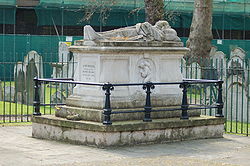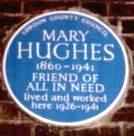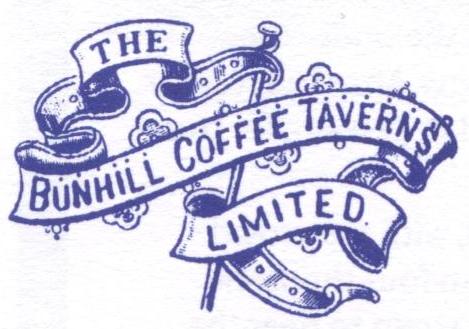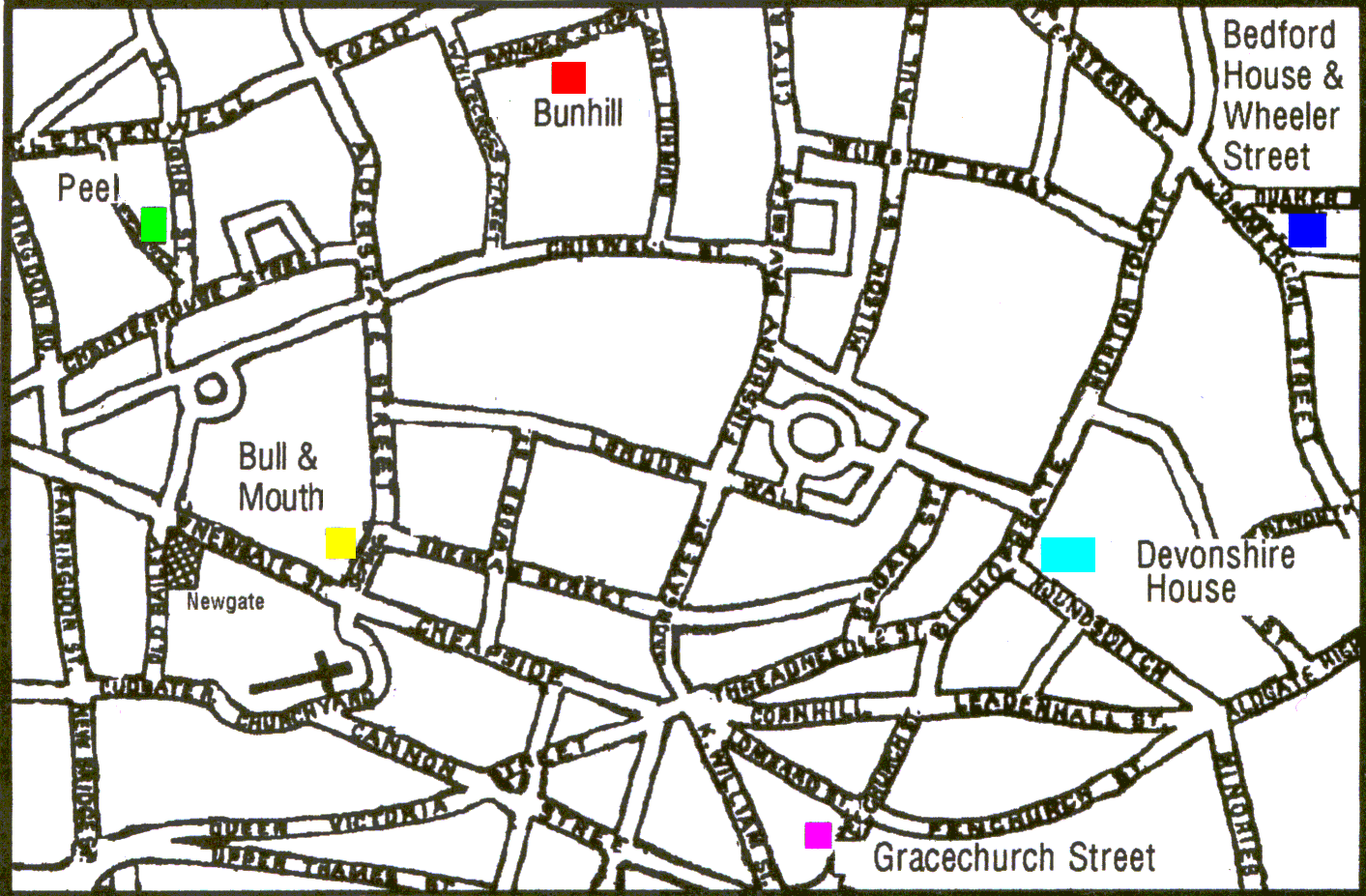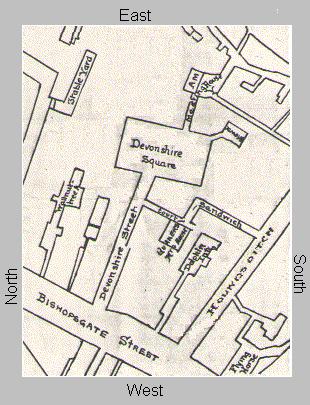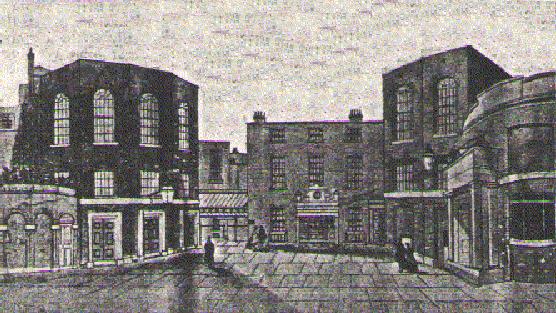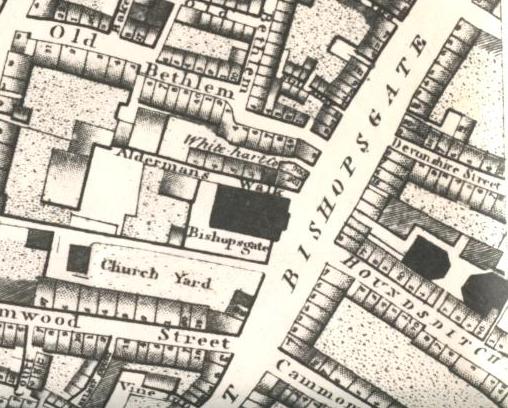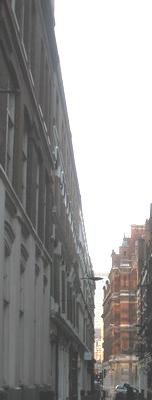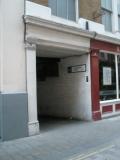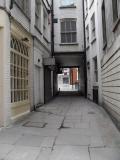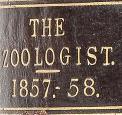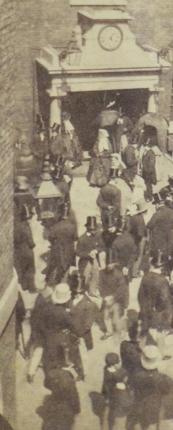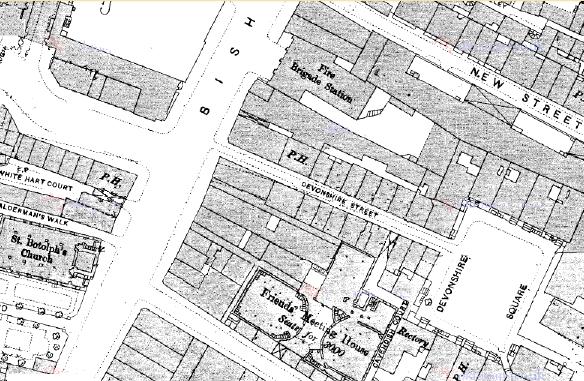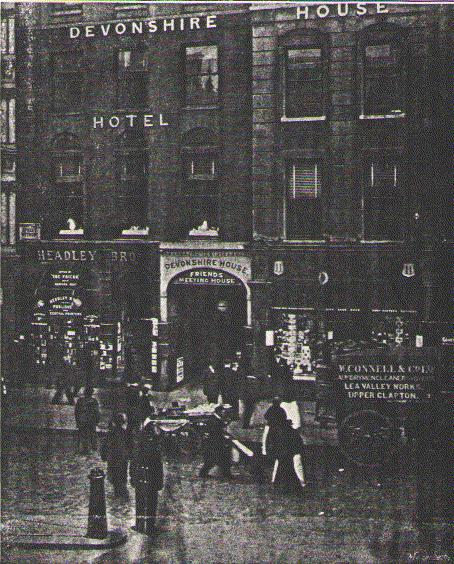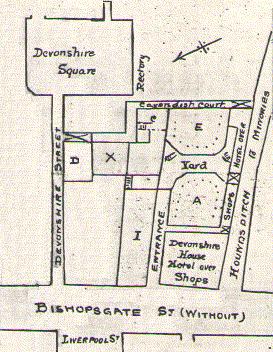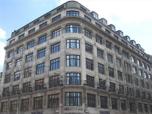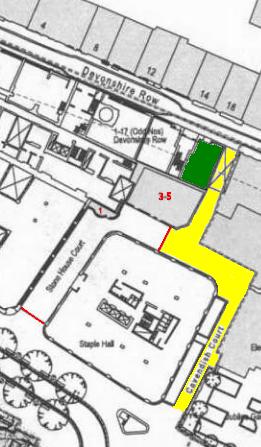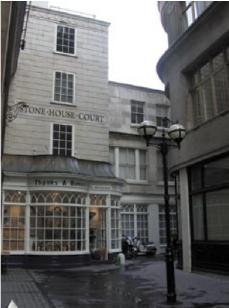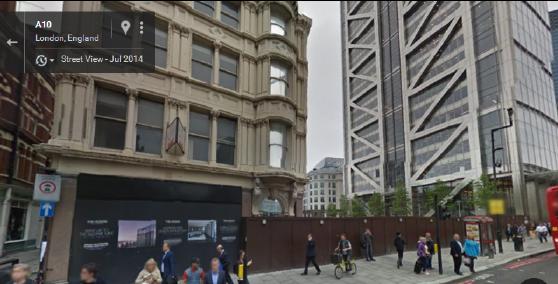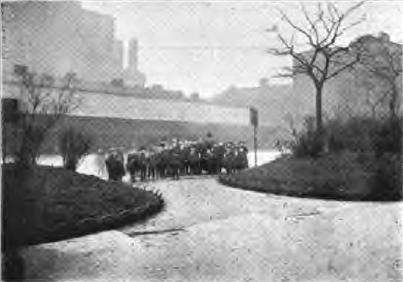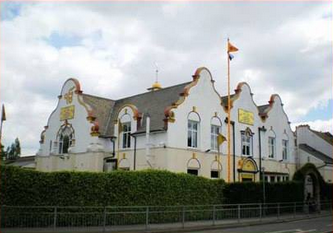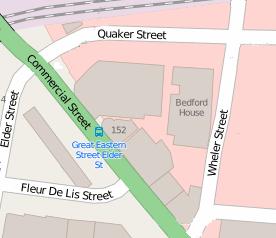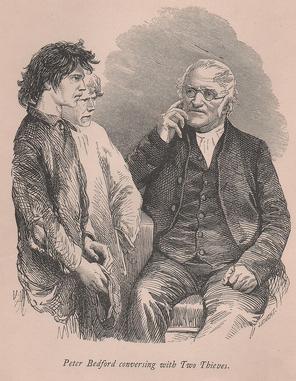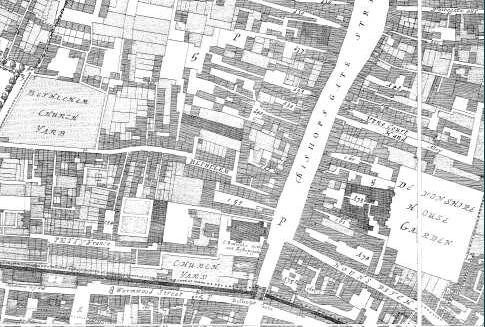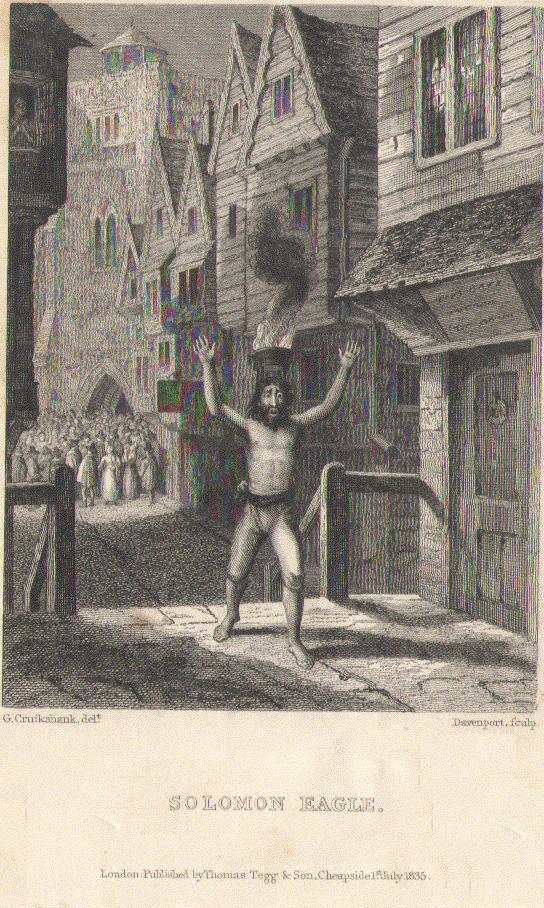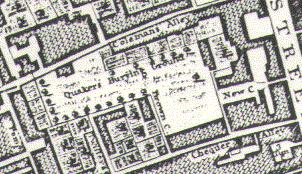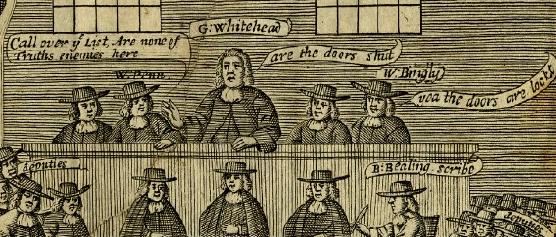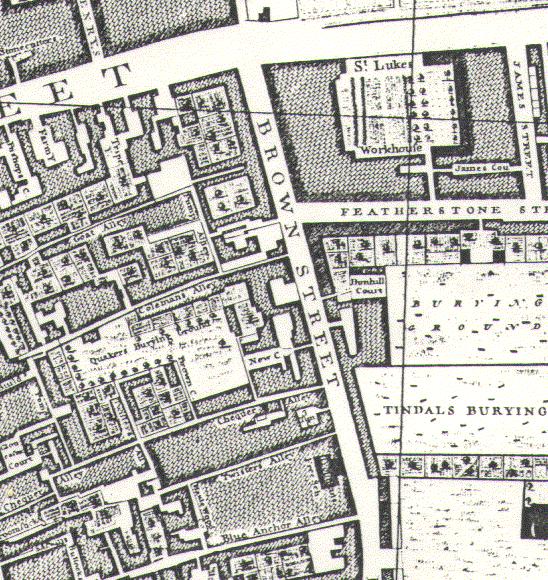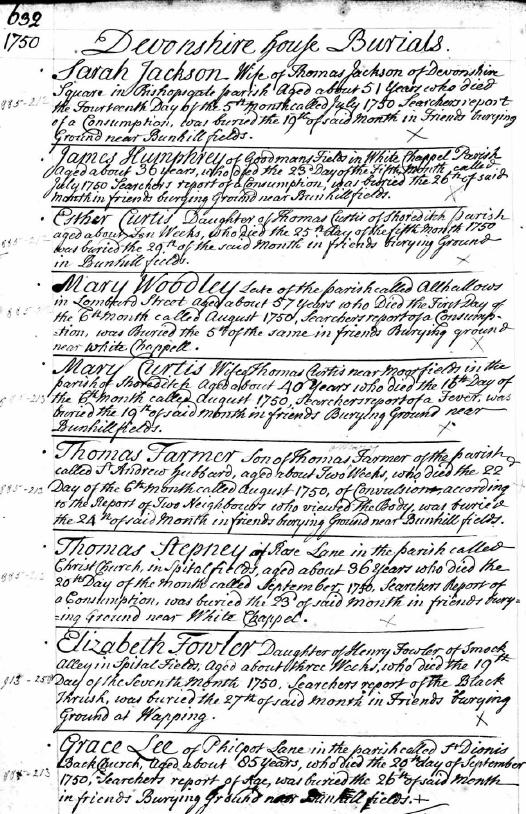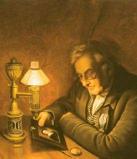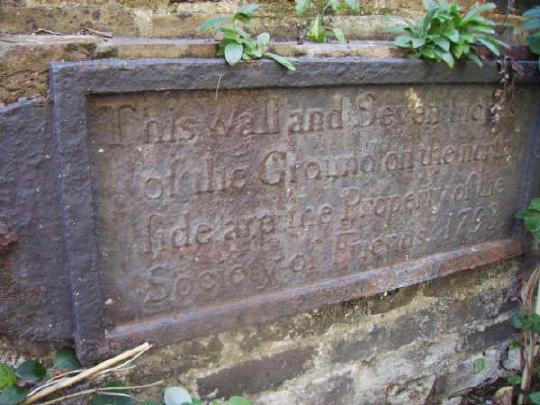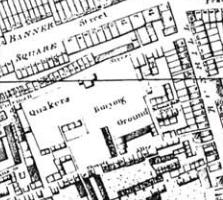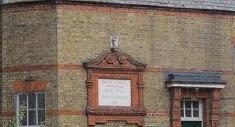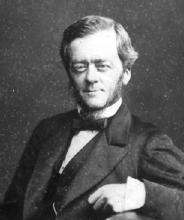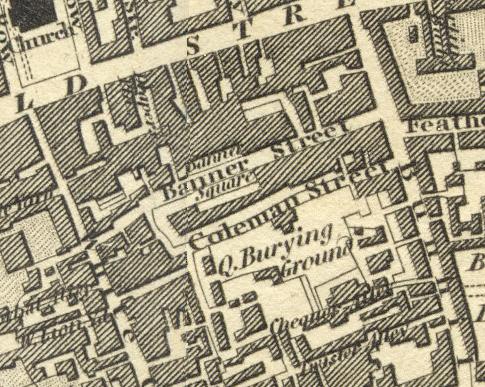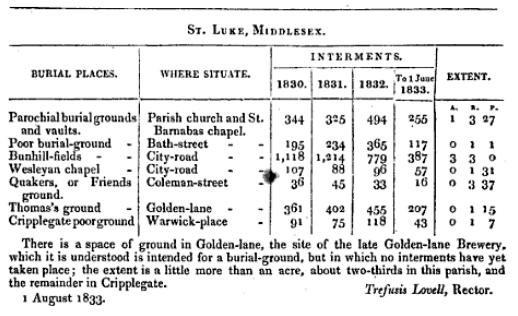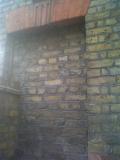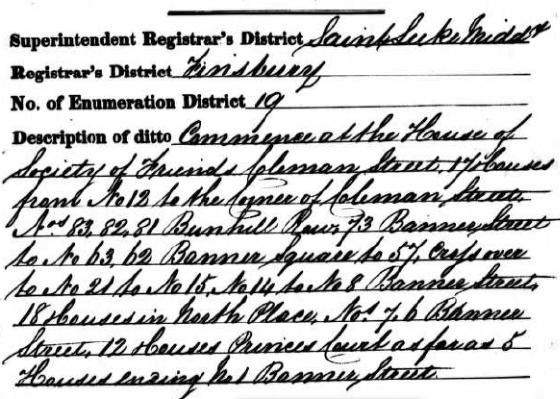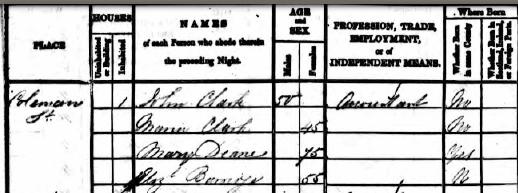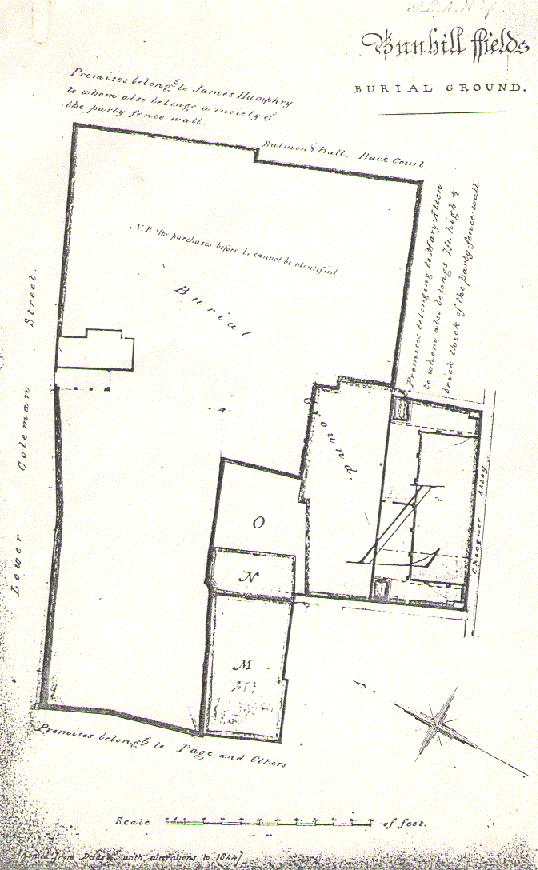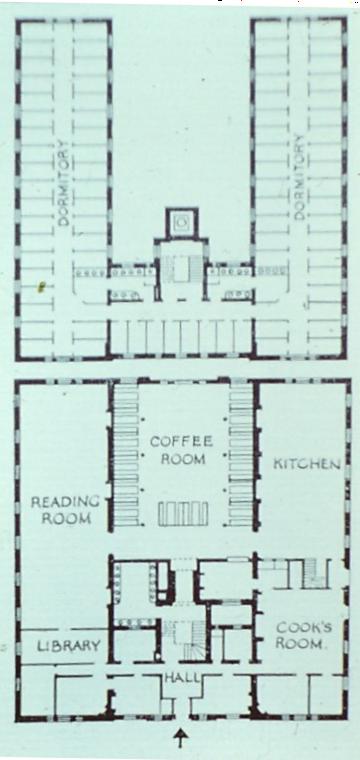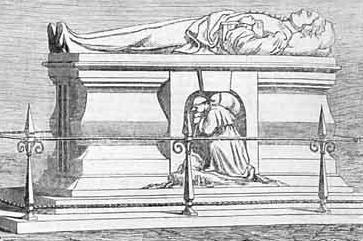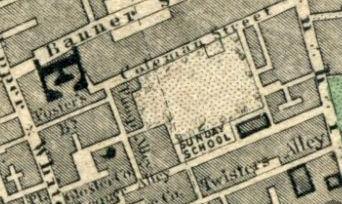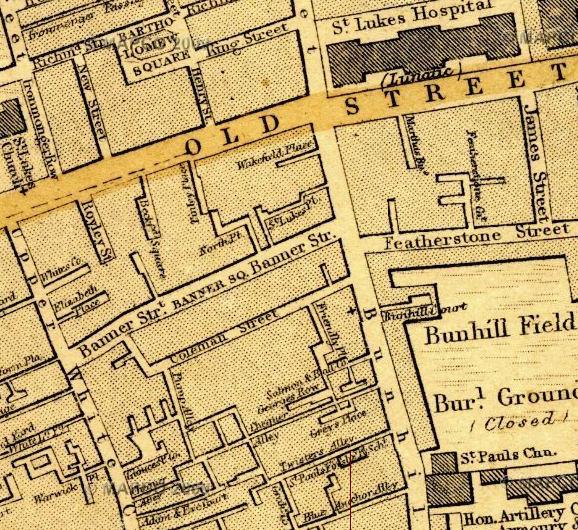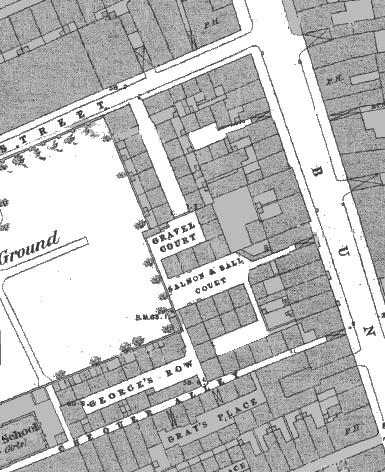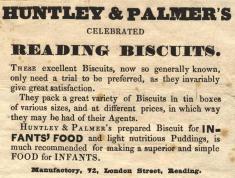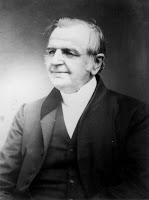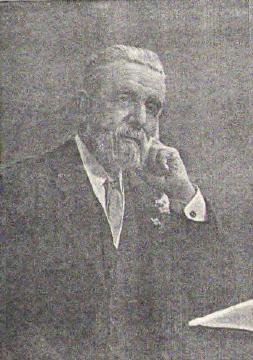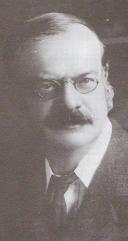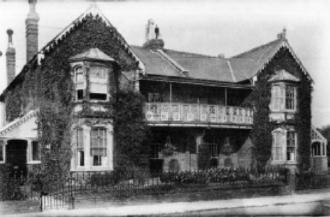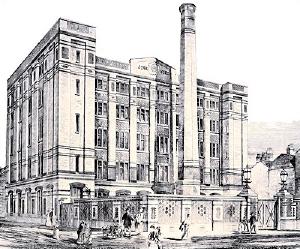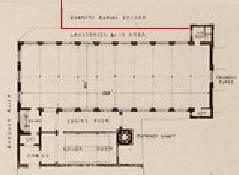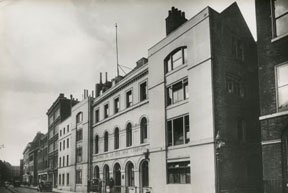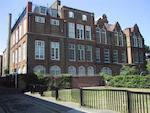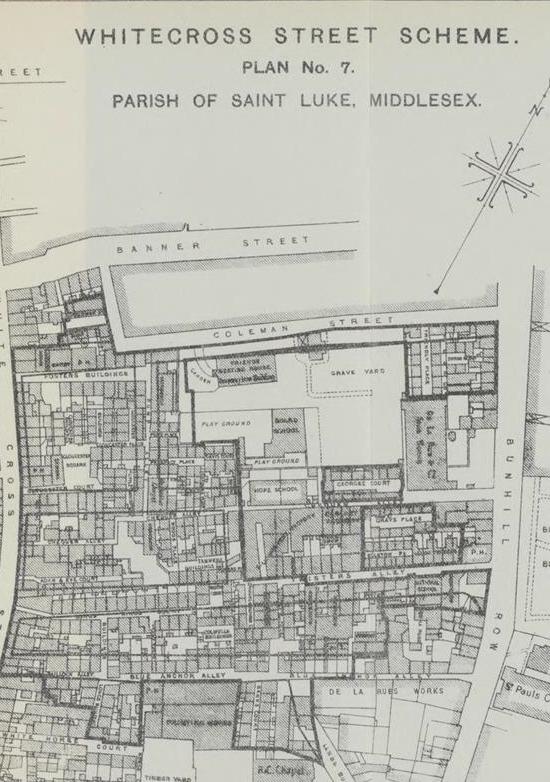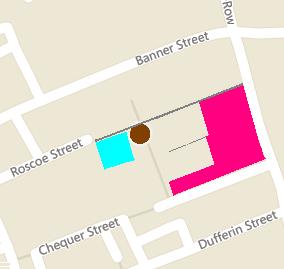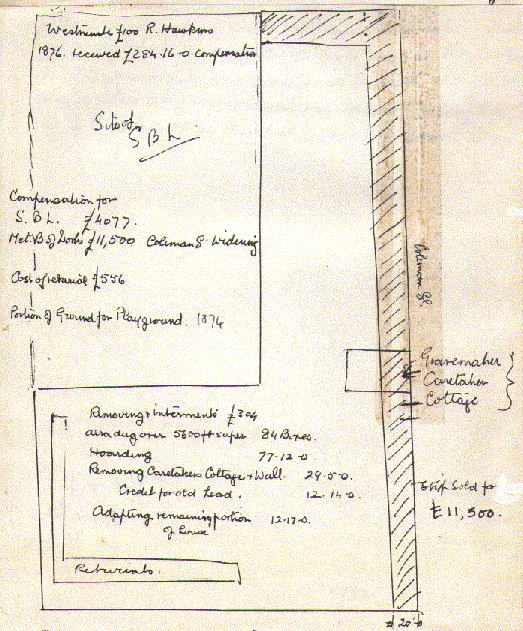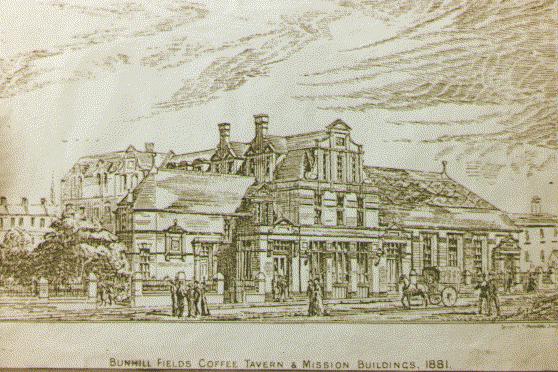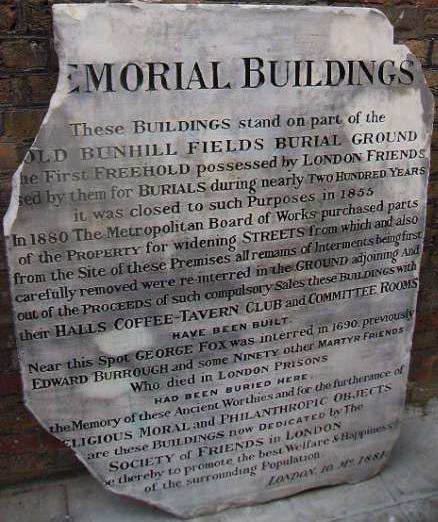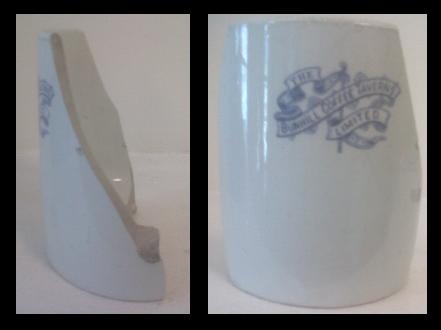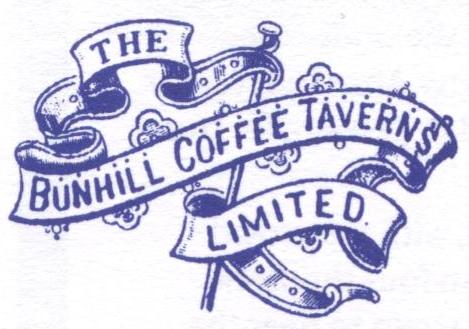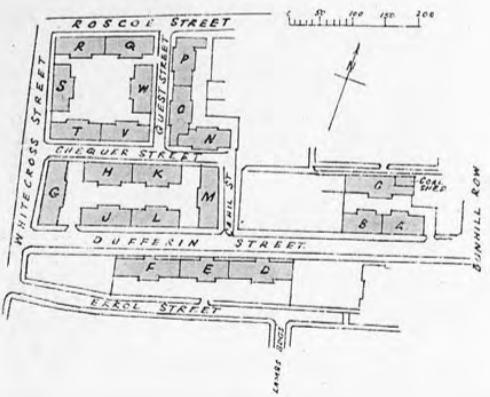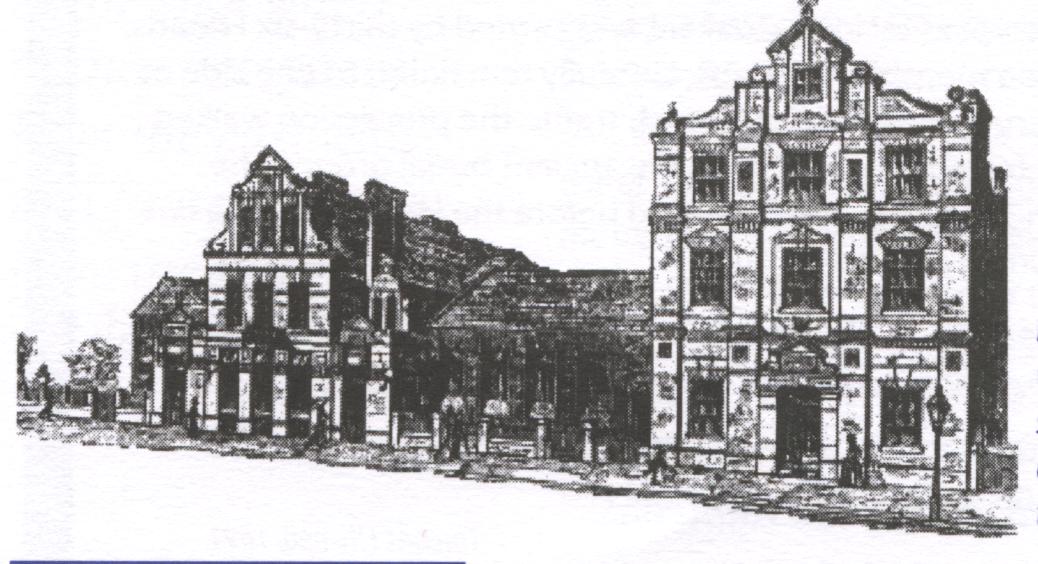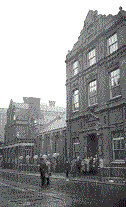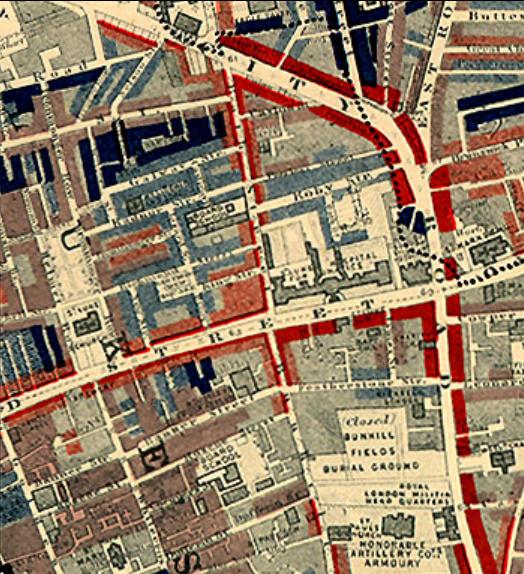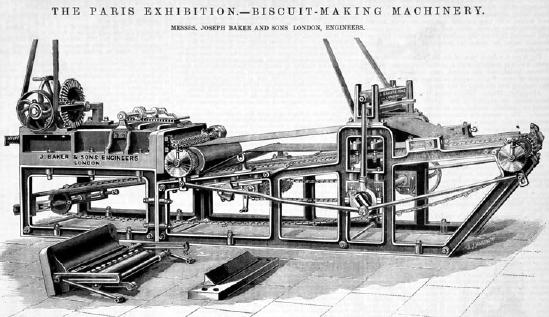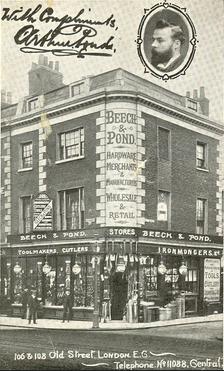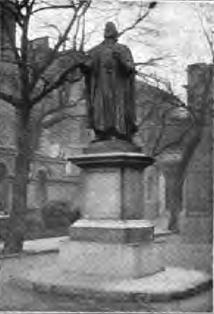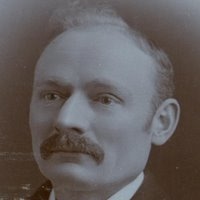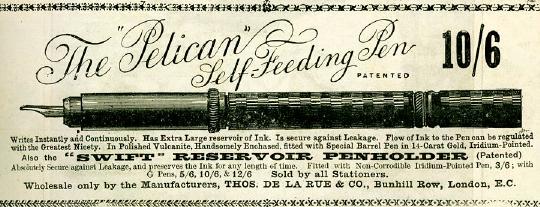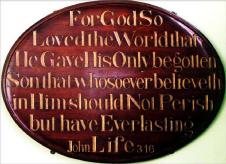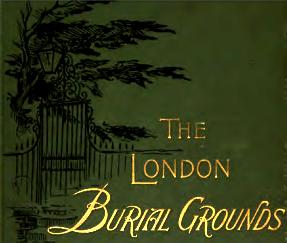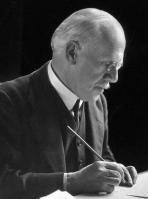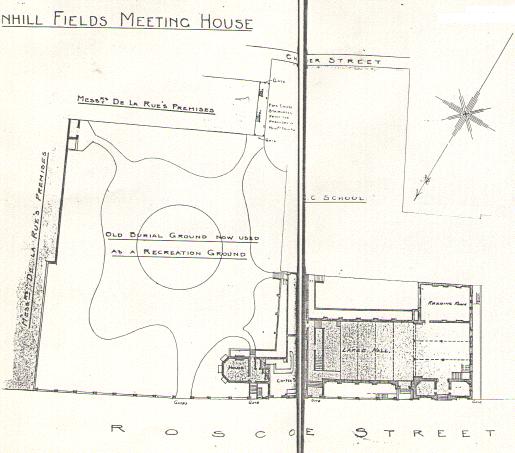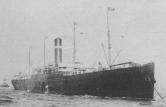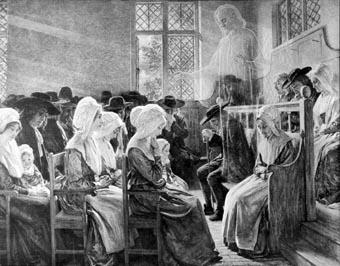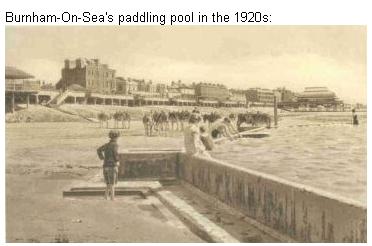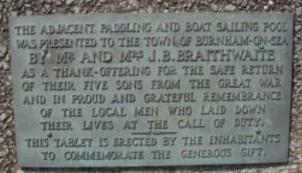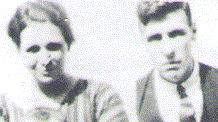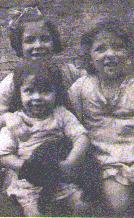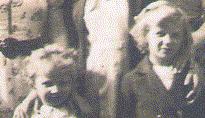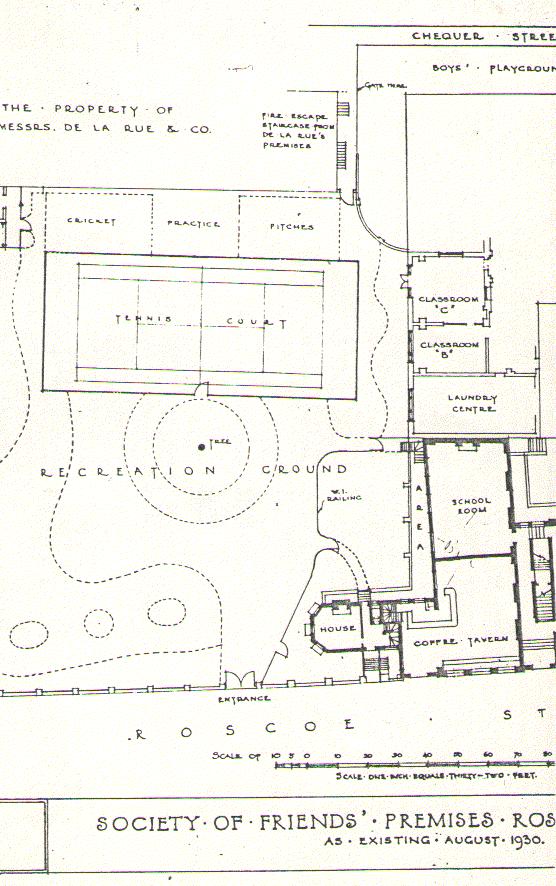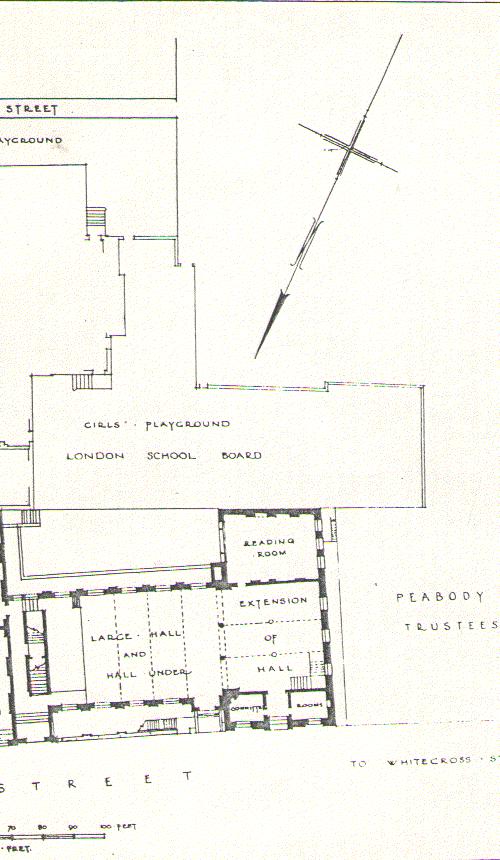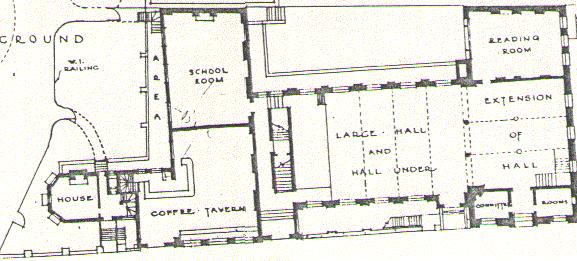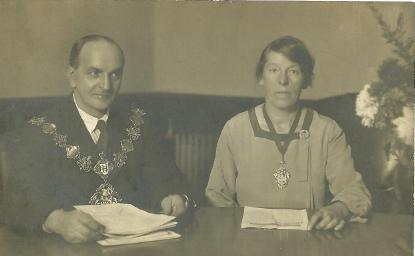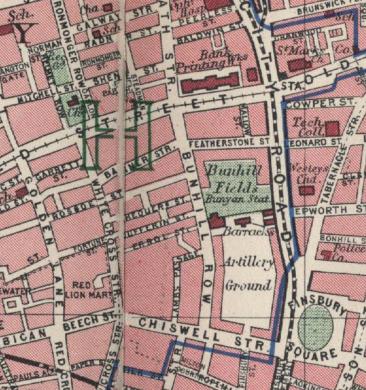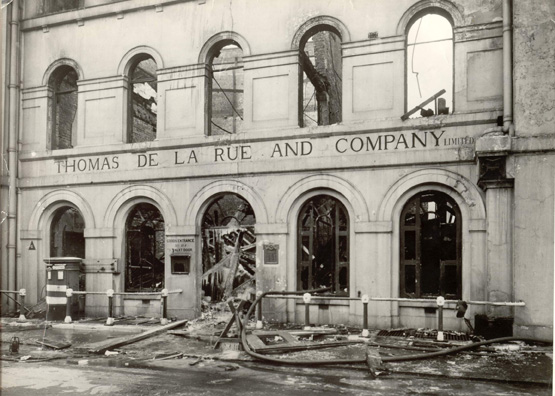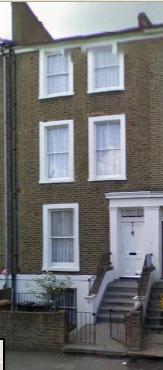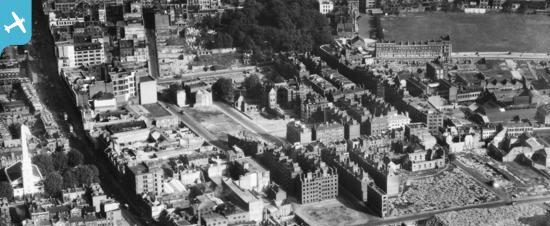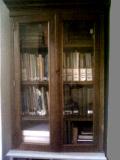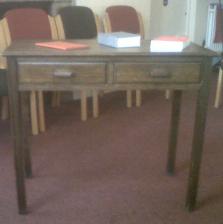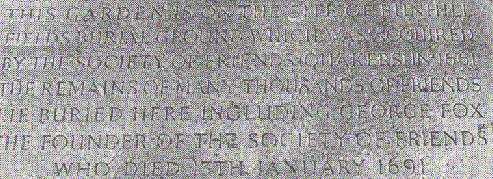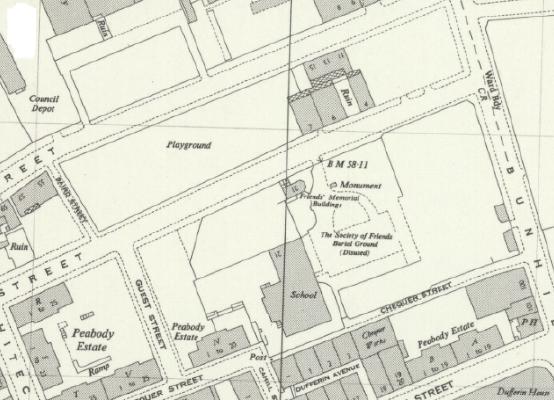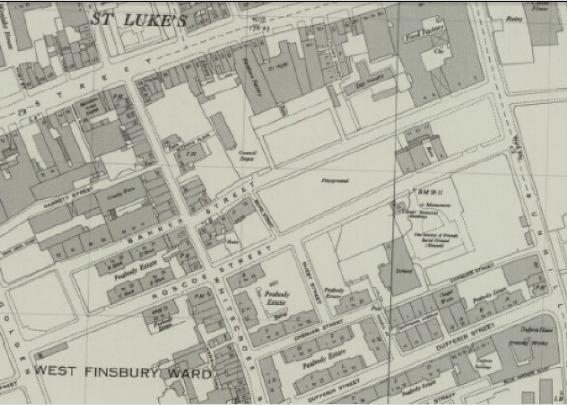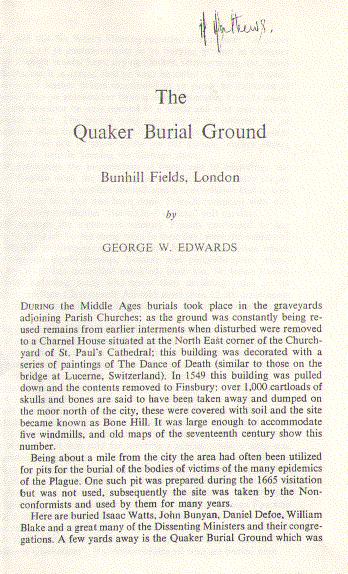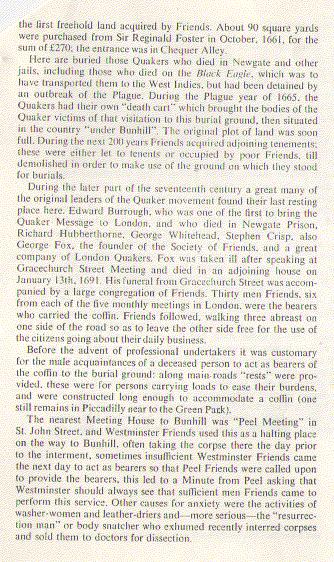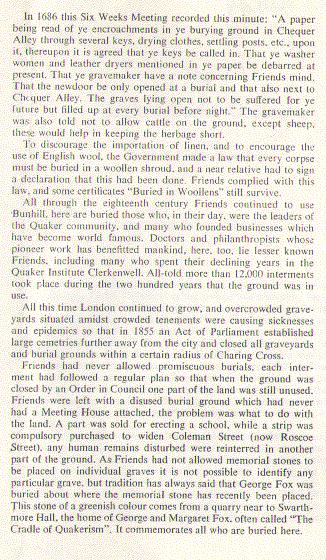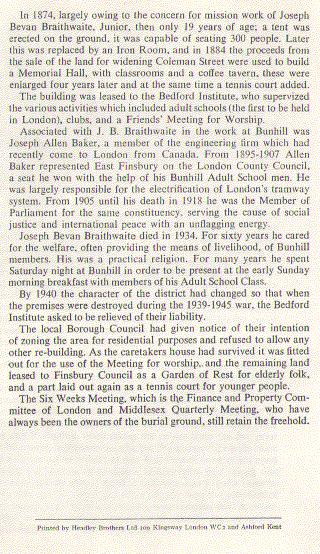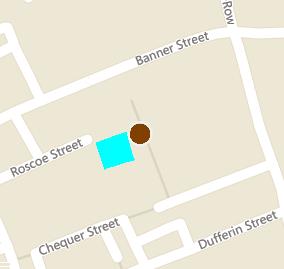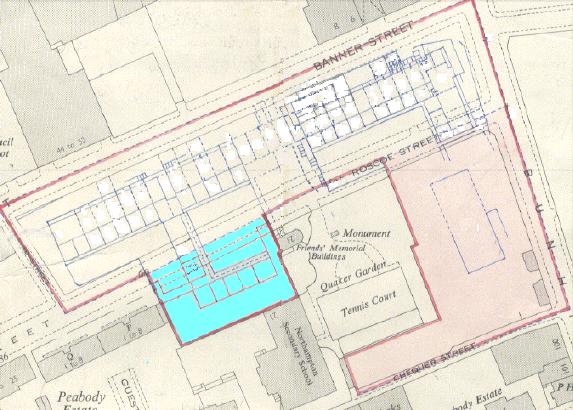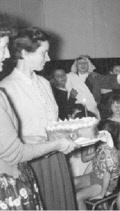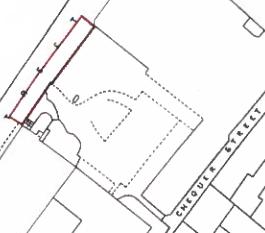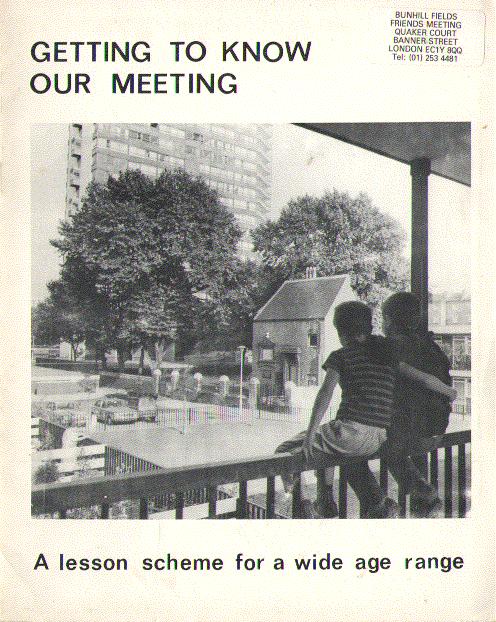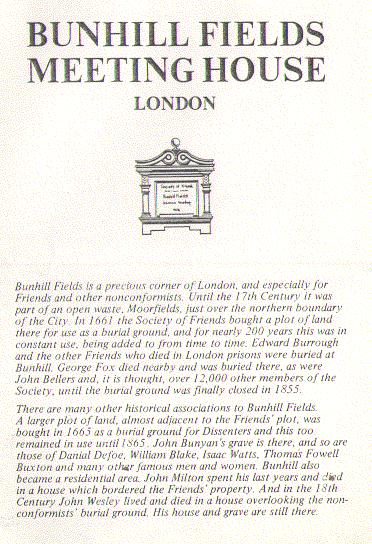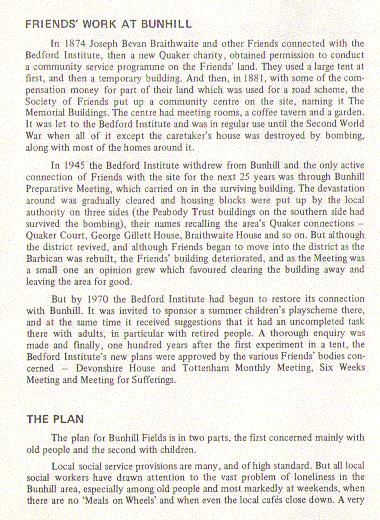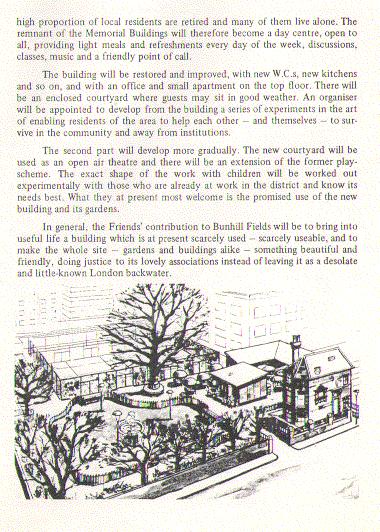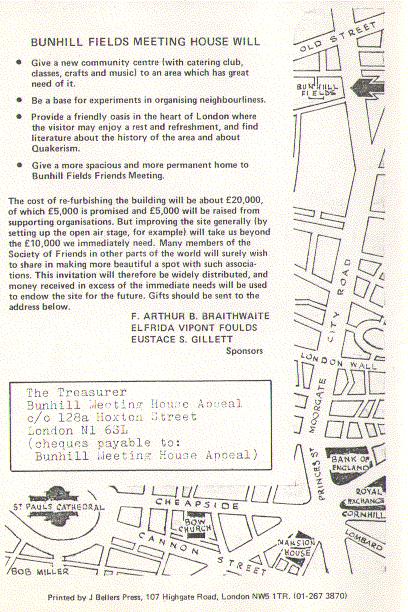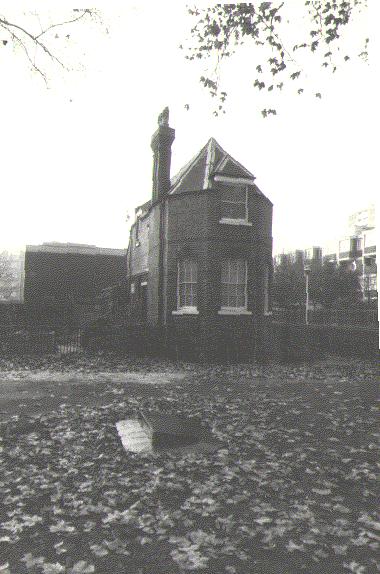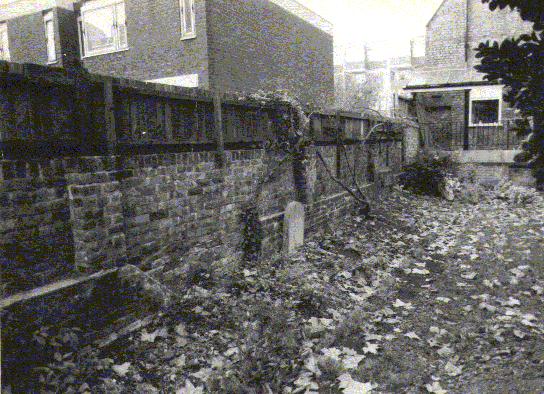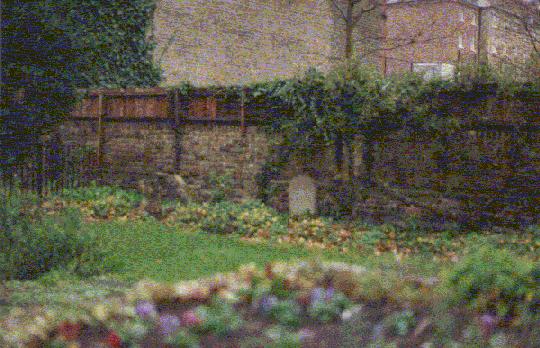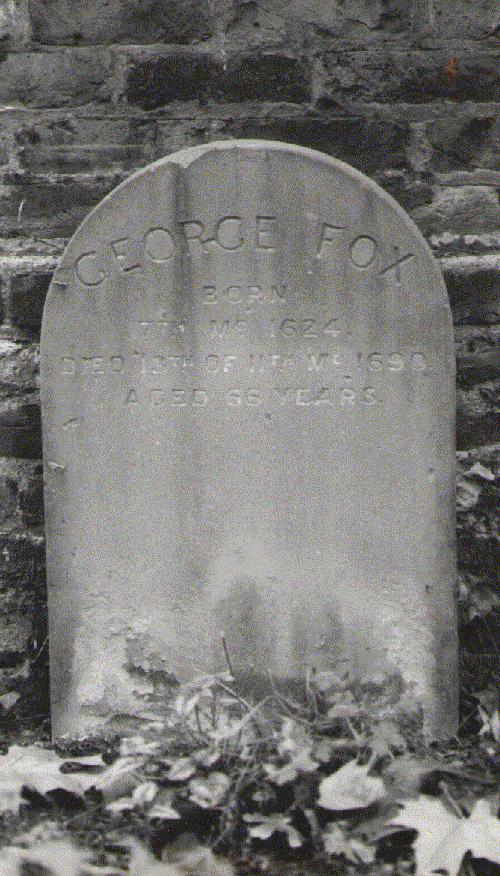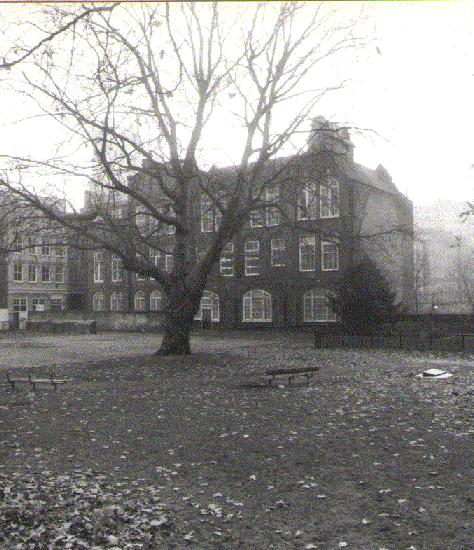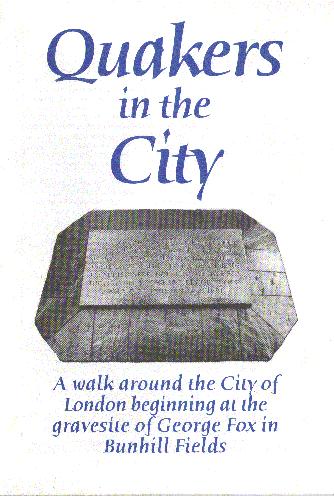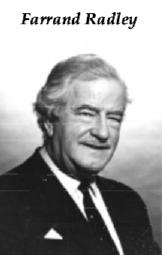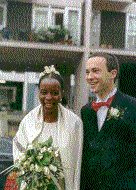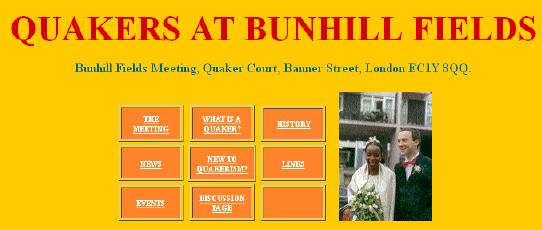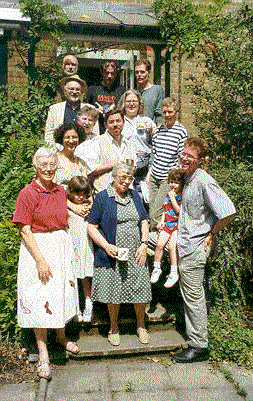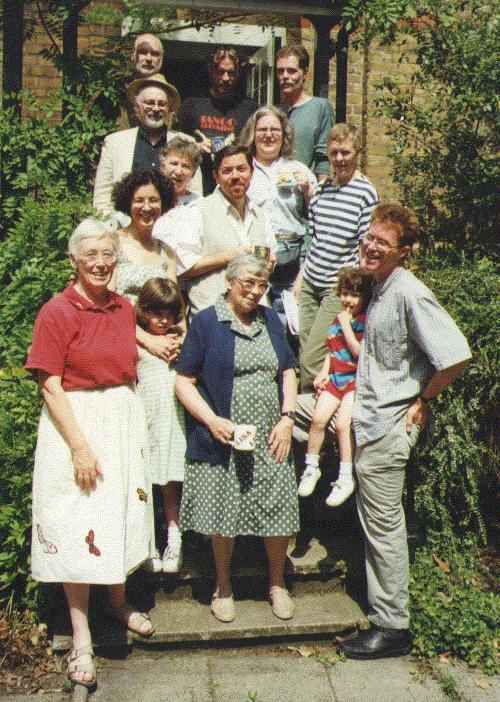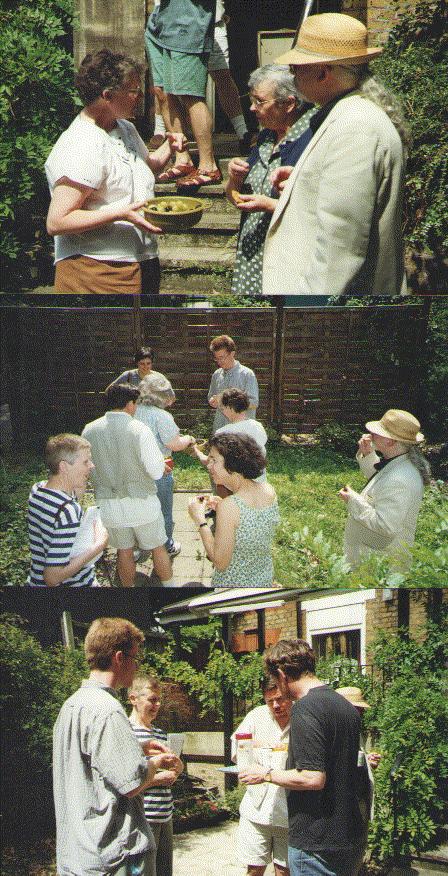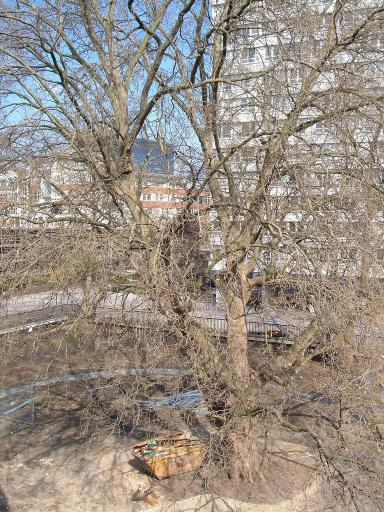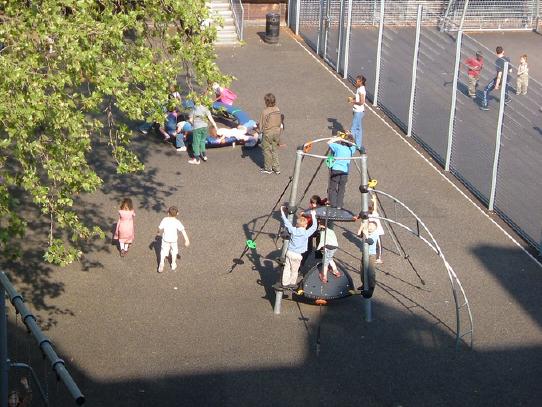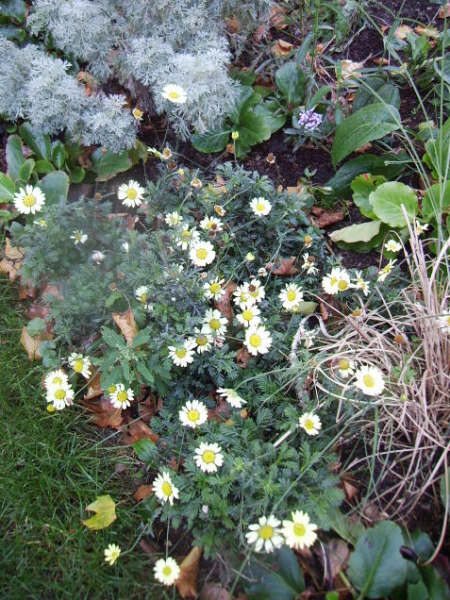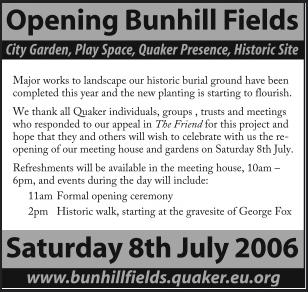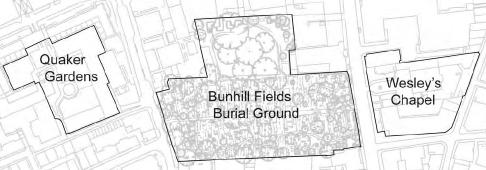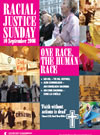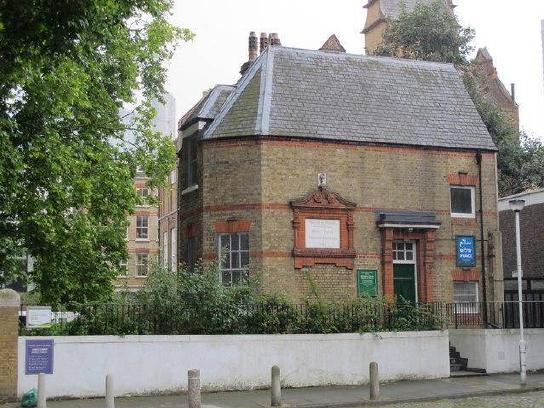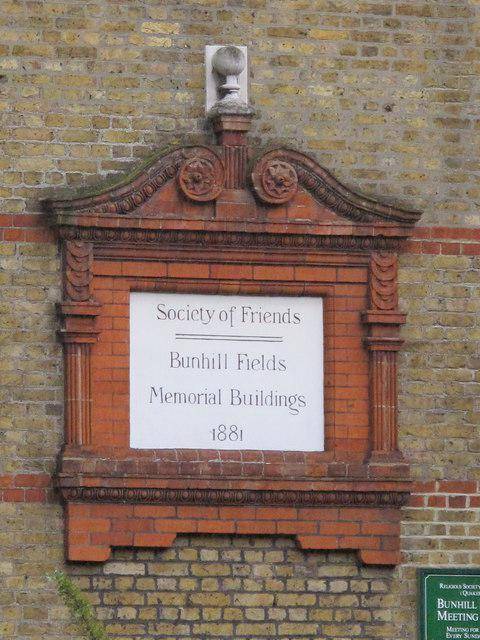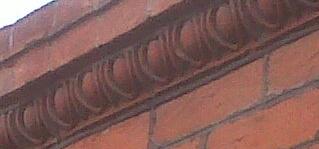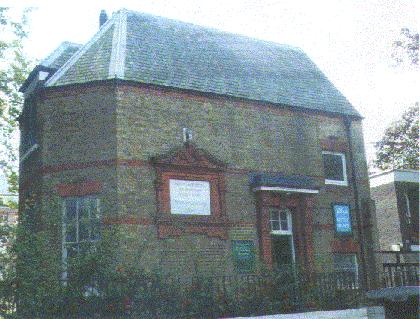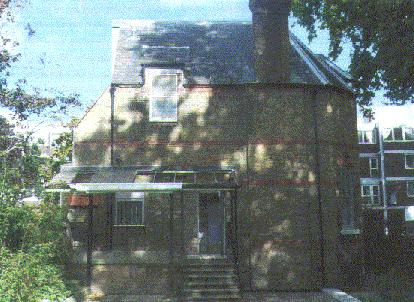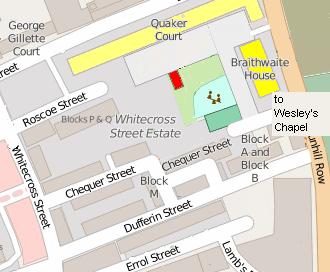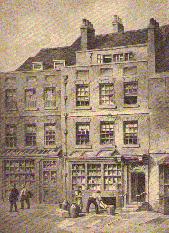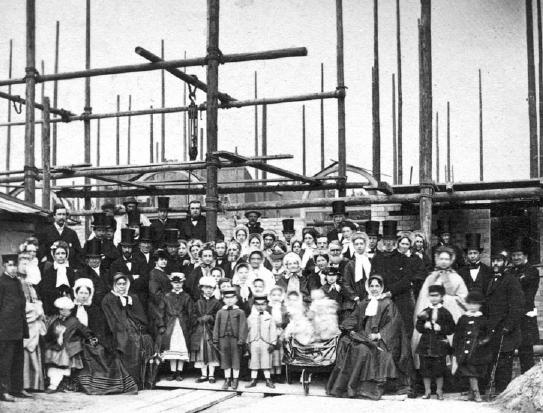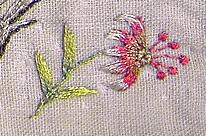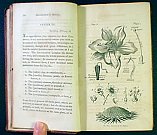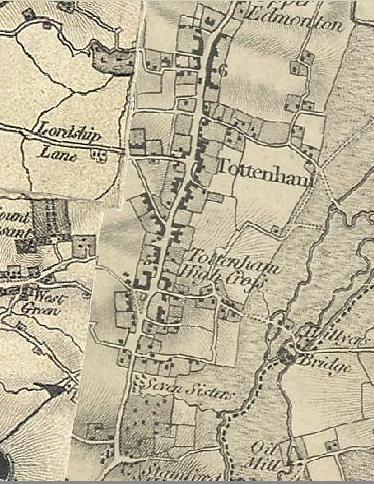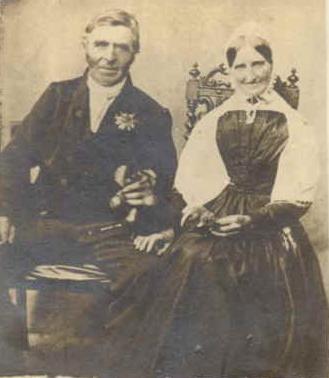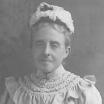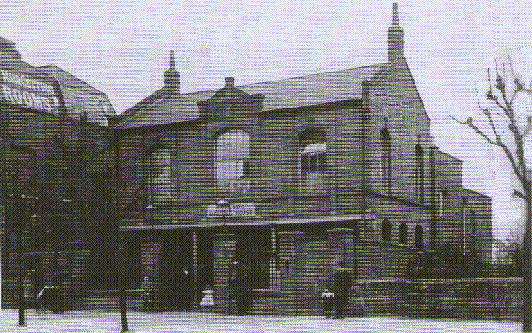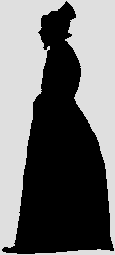
|
Bunhill and beyond
blog
Olive Yarrow's memories Local timeline Collectivised writings Individual writings Bob Saunders on the church - Quaker Quiet - Methodist Hymns |
Quakers around Shoreditch
|
|
|
Oranges and lemons
Say the bells of St Clements You owe me five farthings Say the bells of St Martins When will you pay me? Say the bells of Old Bailey When I grow rich Say the bells of Shoreditch When will that be? Say the bells of Stepney I'm sure I don't know Says the great bell at Bow" Maybe the children of London made up the song to sing the character of its districts [history link]. The Parish of Shoreditch was known for its poverty. Standing north of the Bishopsgate on the Roman Road from the Thames to Cambridge, it looked south to the City of London, where the Quaker bankers lived, north to Stoke Newington and Tottenham, where the Quaker middle classes withdrew, west to Islington where Charles Lamb peered through the curtains at Quaker women, and east to affluent Hackney and its dissenting academies. But in the immediate area of Shoreditch was a different Quakerdom: the inner city missions of Spitalfields, Hoxton, and Bunhill. |
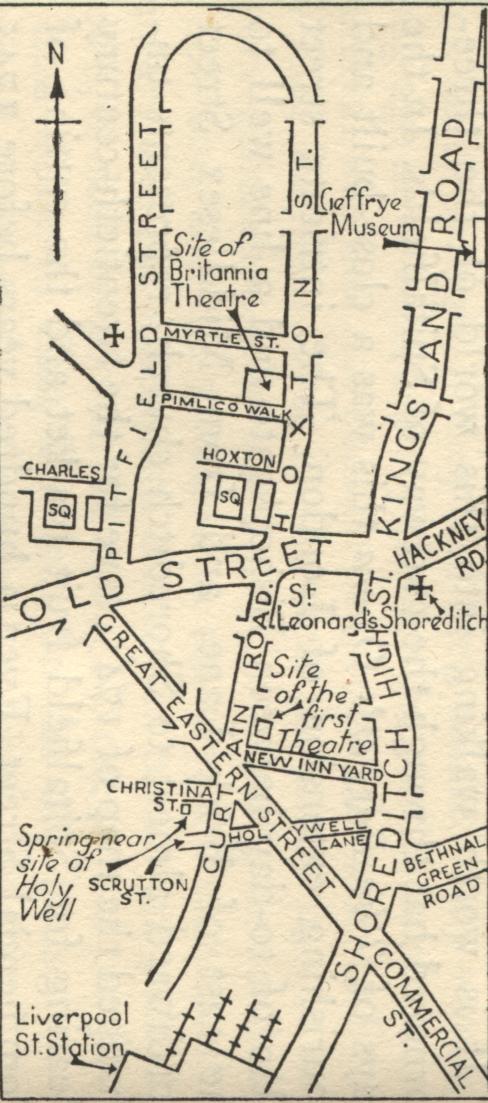
|
Baptist and other
dissenters preceded the Quakers, but in
1647 George
Fox (1624 -
1691) began preaching around Leicestershire:
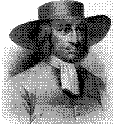
|
"Now was I come up in a spirit through the
flaming sword into the paradise of God.
All things were new and all the creation gave another smell unto me than before, beyond what words can utter." |
"This was Justice Bennet of Derby that first called us Quakers because we bid them tremble at the word of God, and this was in the year 1650."Travelling North through Yorkshire and Lancashire, in 1652, Fox found "a great people to be gathered" around Westmorland and Furness, where people called "Seekers" were much in sympathy. Margaret Fell, wife of judge Thomas Fell, gave particular support at her home, Swarthmoor Hall, where a base was established for an organisation.
In
1654 the "Valiant Sixty" were sent around the country
to spread the word. Francis Howgill and
Edward
Burrough
were delegated to London. They worked hard,
speaking and publishing constantly.
In his testimony to his companion's life, Howgill
describes the characteristic silence of Quaker meetings:
-
The Lord of heaven and earth we found to be at
near at hand, and, as we waited upon him in
pure silence, our minds out of all things, his
heavenly presence appeared at our assemblies,
when there was no language, tongue nor speech
from any creature . . . We came to know a place
to stand in and what to wait in . . .
-
While waiting upon the Lord in silence . . . our
mouths opened, and we spake with new tongues,
as the Lord gave us utterance, and his spirit led
us, which was poured upon sons and daughters.
LOVE AND UNITY
1676. (Book of Discipline 1834 page 84) |
|
Disunity and conflict - Quakers and
John Bunyan
The people who formed different movements within christian thought in the 17th century read the 1611 English Bible dilligently - and reached different conclusions. In the following passage, from Grace Abounding to the Chief of Sinners in a Faithful Account of the Life and Death of John Bunyan (1666), Bunyan, a Baptist, explains how he considered the Quakers had misinterpreted the scriptures. A Quaker defense of their interpretation of scriptures is included in An epistle from the Quakers to the Governor of Barbados in 1671. The debate between Bunyan and the Quakers was carried out by pamphlet war between 1856 and 1657 - Now made availabale on the web by Larry Kuenning.
[123]. Also besides these teachings of God in His word, the Lord made use of two things to confirm me in this truth; the one was the errors of the Quakers and the other was the guilt of sin; for as the Quakers did oppose this truth, so God did the more confirm me in it, by leading me into the scripture that did wonderfully maintain it. [124]. The errors that this people then maintained, were:- 1. That the holy scriptures were not the word of God. 2. That every man in the world had the spirit of Christ, grace, faith, etc. 3. That Christ Jesus, as crucified, and dying sixteen hundred years ago, did not satisfy divine justice for the sins of the people. 4. That Christ's flesh and blood were within the saints. 5. That the bodies of the good and bad that are buried in the church-yard, shall not arise again. 6. That the resurrection is past with good men already. 7. That that man Jesus, that was crucified between two thieves, on mount Calvary, in the land of Canaan, by Jerusalem, was not ascended above the starry heavens. 8. That He should not, even the same Jesus that died by the hands of the Jews, come again at the last day; and as man, judge all nations,' etc. [125]. Many more vile and abominable things were in those days fomented by them, by which I was driven to a more narrow search of the scriptures, and was through their light and testimony, not only enlightened, but greatly confirmed and comforted in the truth: And, as I said, the guilt of sin did help me much; for still as that would come upon me, the blood of Christ did take it off again, and again, and again; and that too sweetly, according to the scripture. O friends! cry to God to reveal Jesus Christ unto you; there is none teacheth like Him.
|
|
|
Identity How did Quakers, as a whole, become an identity with an organisation? |
Joseph Besse (1753) documented the "sufferings of the people called Quakers" "from the time of their being first distinguished by that name in the Year 1650"
1656 An "Epistle" sent from "elders and brethren" [gathered at] Balby to "the brethren in the north" who held meetings "in the light".
It has been suggested that Quaker identity was formed in what were called sufferings, especially following the restoration of monarchy in 1660 after which people meeting "under the name of Quakers, and other names of separation" were considered a (or the) major danger to the internal security of the new state. In this atmosphere the land at Bunhill was bought for the use of "the elect people of God in scorn called Quakers"
The Oxford dictionary says Quakers gave the word sufferings a special meaning of the "hardships of people distrained on for tithes etc". Tithes are the taxes paid to support the church. Quakers wanted to organise a society outside the church. "etc" included being imprisoned for refusing to take an oath of allegiance or for meeting as Quakers rather than in the established church.
Kristel Hawkins says that Ellis Hookes (1635-1681), clerk to the London Quakers "presumably began" recording Quaker sufferings "in earnest sometime around the Restoration in 1660". His efforts created the first two volumes of the Great Book of Sufferings." The "centralisation" of Quakers from early 1660s to the mid 1670s made this possible. Accounts had to travel through the different levels of meetings before arriving in London. (Kristel Marie Hawkins "Suffering and Early Quaker Identity: Ellis Hookes and the Great Book of Sufferings". (Online Thesis) - (offline)
1.1.1661 Start of Veneer's rising. Thomas Veneer's congregation of fifth monarchists, which included New Model Army veterans, met above a tavern in Swan's Alley off Coleman Street in the City. The Quakers (who also included New Model Army veterans) met at the Bull and Mouth in the City.
10.1.1661 A proclamation published, whereby the King forbade "Anabaptists, Quakers, and Fifth-monarchy men, to assemble or meet together under pretence of worshipping God, except it be in some parochial church or chapel, or in private houses by the persons there inhabiting. All meetings in other places are declared to be riotous and unlawful".
The proclamation was followed by statement from George Fox, Gerald Roberts, Henry Fell, Richard Hubberthorn, John Boulton, John Hinde, John Stubbs, Leonard Fell, John Furley Junior, Francis Howgill, Samuel Fisher, and Thomas Moore "in behalf of the whole body of the Elect People of God who are called Quakers, against all plotters and fighters in the world", "in answer to that clause of the King's late proclamation which mentions the Quakers, to clear them from the plot and fighting which therein is mentioned, and for the clearing their innocency." - (external link to the declaration)
May 1661 a "General Assembly of the Brethren" held. November 1661 Amor Stoddart bought land [Bunhill] 'for the use and service of the elect people of God in scorn" called Quakers'. 1662. "An Act for preventing mischiefs and dangers, that may arise by certain persons called Quakers and others refusing to take lawful Oaths".
1668 on Some kind of annual meeting.
1672 a "General Meeting of Friends for the Nation" at which it was decided that there would be a: "General Meeting of friends" held in London once a year during Whitsun week, with six friends from London, three from Bristol, two from Colchester and one or two from each county of England and Wales.
October 1675 Meeting for Sufferings established. This developed into the executive body of the society. Its name arose from a system of reporting anti-Quaker "persecution". The Recording Clerk recorded the Sufferings, and became the general administrator of the Society.
After 1679, Meeting for Sufferings had weekly supervision of a national stock of funds for the relief of Quakers who were dispossessed or in prison.
|
|
Money and power
|
"when I grow rich" may not be a very appropriate tag for Quakers in business - Quakers in business such as the Bevans were well-off to start with.
From 1661 to 1688, Quakers were a radically deviant and confrontational people who, whilst often inprisoned, could also pull strings with government. After these years of conflict, rich families remained powerful in the organisation.
The families include the Barclays - Gurneys - and Frys. William Penn did not establish a Quaker family.
David Barclay (soldier), born 1610 in Scotland, went to Germany in 1626 to make his fortune as a soldier. He rose to the rank of Major in the army of the King of Sweden, during the Thirty Years War. However, in 1636 he returned to Scotland to fight in the covenanting army, becoming a Colonel of horse. In 1647 he purchased the lands and barony of Urie in Kincardineshire. He married Katherine Gordon, the daughter of Sir Robert Gordon (first baronette of Gordonstoun) Their first son, Robert Barclay, was born 23.12.1648. As politcal power changed, David was locked up in Edinburgh Castle where, in 1665, he became a Quaker. In 1667 Robert Barclay also became a Quaker. Robert published thological defences of Quakers, the title of one of which is illuminating:
1673: A Catechism and Confession of Faith, approved of, and agreed to by the general assembly of the patriarchs, prophets, and apostles, Christ himself chief speaker in and among them, which containeth a true and faithful account of the principles and doctrines which are most surely believed by the churches of Christ in Great Britain and Ireland, who are reproachfully called by the name of Quakers, yet are found in the one faith with the primitive church and saints, &c.
In 1676 he published his most famous book An Apology for the true Christian Divinity, as the same is held forth and preached by the people called, in scorn, Quakers; being a full Explanation and Vindication of their Principles and Doctrines, by many Arguments deduced from Scripture and right reason, and the testimonies of famous Authors, both ancient and modern, with a full Answer to the strongest Objections usually made against them; presented to the King ; written and published, in Latin, for the information of Strangers, by Robert Barclay; and now put into our own Language, for the benefit of his Countrymen.
David Barclay (soldier) died 12.10.1686
David Barclay (draper) (1682-1769) "of Cheapside" in London, was the second son of Robert Barclay. He was a rich linen merchant whose second wife, Priscilla Freame, was John Freame' daughter. Two sons, John Barclay and David Barclay (banker) (1729-1809) joined the bank, which was generally known as Barclay, Bevan and Company from 1767 when Silvanus Bevan joined. Tritton was added to the name in 1782.
The "dynasty" of Barclay bankers that followed included Robert Barclay (born 1758). The dynasty was reinforced by alliances with other banking families. Another Robert Barclay married Elizabeth Gurney, daughter of Joseph Gurney. Joseph Gurney Barclay married Mary, daughter of William Leatham, another banker. In 1896 another Robert Barclay merged twenty banks into "Barclay and Company Limited". The "core" of this combined bank was "Barclay, Bevan, Tritton, Ransom, Bouverie and Company". Eight of the other components had "Gurney" in their title,
Samuel Gurney was born at Earlham Hall near Norwich on 18.10.1786. An older sister was Elizabeth Gurney (21 May 1780 - 12 October 1845) who became Fry was born 21.5.1780. A younger brother was Joseph John Gurney (2.8.1788 - 4.1.1847) whose name is associated with the Quaker divisions in America.
They were children of John Gurney (1749-1809), Quaker banker of Norwich, and Catherine daughter of Daniel Bell (1728-1750), a London merchant from Stamford Hill. The family's Gurneys Bank was founded in 1770.
At the age of fourteen, Samuel Gurney was placed in the counting-house of his brother-in-law, Joseph Fry (1777-1861), a tea merchant and banker, at Mildred's Court in the City of London.
Another Elizabeth Gurney (died January 1903) was a daughter of Samuel Gurney. She married Ernst Christian Ludwig von Bunsen (Ernest de Bunsen) on 5.8.1845
John Fry of Sutton Benger, Wiltshire, a mercer, married Mary. He died 1775. John, but not Mary, were listed amongst relatives present at William Storrs Fry's wedding in 1767.
Fry brothers
Joseph Fry (1728-1787) type-founder and chocolate maker based in Bristol. Married Anna Portsmouth (1719/20-1803) of Basingstoke. Moved to Queen Street, near Upper Moorfields, London, about 1768, where they operated as printers and typefounders. Joseph Fry's firm became - Joseph Fry, London 1773 - 1776. He took his sons, Edmund Fry (1754-1835) and Henry Fry (1756-1817) into partnership in 1782, His younger son, Joseph Storrs Fry (1769-1835), later joined the chocolate firm.
William Storrs Fry (1736-1808) married Elizabeth Lambert at Devonshire House on 2.6.1767. He was then a cheesemonger of Whitechapel. Elizabeth was the daughter of Robert and Elizabeth Lambert of Walsingham, Norfolk. Her father may have been an "innholder".
Edmund Fry (1737-1835) of Dalby Terrace, City Road, died 22.12.1835 aged about seventy nine years and was buried at Bunhill Fields on 27.12.1835. "N.B. Not in membership". Record examined Peel Monthly Meeting, Jacob Poot Clerk. 14.2.1836. His second marriage on 13.3.1807 to Ann Hancock at Saint Leonards, Streatham, Surrey, may not have been a Quaker one, although Ann was a Quaker: born 21.7.1774, Society of Friends M M, Surrey Co , England. Father: William Hancock. Mother: Frances Rebecca Hancock. The birth of their son, Arthur (16.4.1809-1878) was recorded with the note "not a member". Ann died 7.7.1825 and was buried at Barking (Quaker). Arthur was buried at Winchmore Hill (Quaker). Edmund's first wife, Jenny (born about 1764), died 2.6.1805 aged 41 and was buried at Bunhill Fields on 9.6.1805. Resident Bechin? Row, Hoxton.
Henry Fry (1756-1817) (wife Priscilla), father of Edmund Fry bookseller was born in Small Street, Bristol on 25.1.1756. He was printer, of Basinghall Street in the City of London in 1807. "Late of London", he died on 12.6.1817 and was buried in the Quaker burying ground at Andover, Hampshire, on 17.6.1817.
Edmund Fry (1811-1866) Son of Edmund Fry bookseller, married Caroline Mary Clarence (1809- 1879), the daughter of Richard and Elizabeth Clarence of London in Guernsey in July 1837. "The premises of Edmund Fry, bookseller, stationer and artist's colourman, in Treville Street were badly damaged by fire in 1836 so he moved his business to Union Street and is known to have been established there by 1840". (source). In 1841 he was a bookseller in Union Street, Plymouth. Clarance Fry (1 year old) and Henry Lee Fry (apprentice 15 years old) were also part of the household. In 1851 they were living in Croydon and he was Secretary to the Peace Committee. In 1861 he was a lecturer living in Brighton and Caroline Mary Fry was a teacher. Will: formerly of 25 Gloster- place Brighton, but late of Clarence Cottage, East Barnet, Hertford. Gentleman. Died 7.12.1866 in the Guildhall Coffee House Gresham Street. City of London. Wil proved by Caroline Mary Fry of Clarence Cottage, widow, sole executrix.
Edmund and Caroline's children: Five children became connected with either art or photography: Clarence Edmund Fry (born 1840, Plymouth), Walter Henry Fry (born 1841, Plymouth), Hubert Oswald Fry (born 1843, Plymouth), Lucy Elizabeth Laughton Fry (born 1844, Plymouth) and Allen Hastings Fry (born 1847, Plymouth). Clarence Edmund Fry (1840-1897) formed the London photography firm of Elliott & Fry in 1863 with Joseph John Elliott (1835-1903). Elliot married Clarence's sister Elizabeth Lucy Fry in Brighton in 1864. Walter Henry Fry and Allen Hastings Fry who formed the firm of W. and A. H. Fry in Brighton in 1867. (source)
|
|
Beliefs about 1702
|
about 1702 Issac Watts wrote this outline of the beliefs of two emerging "sects" of Quakers
"Quakers - First, They did generally shake and quake at their first coming up, which was about fifty years ago, and thence had their name. 2d, They deny all ordinances, and say, they are above them. 3d, They affirm perfection in this life, and deny that Jesus Christ, who died at Jerusalem, to be true God. They own a light within, which they call Christ and God, and say it is in every man if he would attend to it, and they follow the motions of this light within in all their actions. This gives them the name of Enthusiasts. Though they do not utterly deny scripture, yet speak meanly of it, say it is a dead letter, and that they do not need it, because they have the Holy Spirit in them, &c. they deny honour, and therefore they salute none. In their first rise they had a great many mad frantic fits, and strange. They are lately divided into two sects, one of them follow Penn, of the notions aforementioned, the other George Keith and Mead; and it is said, they own Christ the Son of God, satisfaction by him, and justification through him, and are by little and little leaving the old Quakers' principles.
|
|
Marriage and disownment
|
Until 1860 English law provided that marriages according to Quaker usage were valid only if both parties were Quaker members. The Marriage (Society of Friends) Act 1860 changed this.
Quaker practice was to disown members who married other than by the Quaker method. The change in the law enabled Quakers to carry on with their practice without losing as many members.
A vocal minority of Quakers opposed the way Quakers practiced disownment. John Bright told Yearly Meeting in May 1858
"Hundred of our members - aye thousands - have been disowned for acts which no church could rightly disown. It was opposed to Christianity, it was opposed to philosophy, it was opposed to all sound argument and to common-sense to disown for these marriages... There was no use attempting to put people in straight-jackets." (Quoted by Anne Vernon in Quaker Business Man: The Life of Joseph Rowntree 2005)
Disownment is a practice peculiar to Quakers, in which the Society makes clear that it does not agree with someone associated with the society. It should not prevent the person from continuing to worship with the Society. In the past, large numbers of Quakers were disowned every year.
In eighteenth century Philadelphia, causes of disownment included (in order of number): marrying contrary to discipline - fornication with fiance(e) - other fornication - drunkenness - debt - military activity - inattendance - showing contempt for the Society's authority over one's conduct - assault - loose conduct - profanity - attending irregular marriage - quarreling - entertainments - marrying too close a relative - neglecting family responsibilities - prosecuting another Friend at law without having exhausted the arbitration procedure of the Society - slander - slaveholding - fraud - gambling - disapproved company - business ethics - theft - schism - adultery - miscellaneous - ignoring Quaker arbitration (other than by going to law) - oaths - voluntary withdrawal - courting and fraternising - holding public offices that entailed activity contrary to Quaker ethics - lying - disobeying parents - dispensing liquor - violating laws - theological - destroying property - dress and speech - fleeing master - counterfeiting - printing - smuggling - misuse of the First Day of the week. (See Licia Kuenning and others 28.8.1991)
|
|
Women
|
The separation of men and women was linked to the idea of a role for each. Quakers were organised into men's meetings and women's meetings and each had its responsibilities. . In the mid-nineteenth century, American Quaker women helped generate the Women's Rights Movement when they expected to take part in inter-denominational affairs.
Women played an important part from the beginning, and spoke prominently at Quaker meetings. Paintings attributed to Egbert van Heemskirk show a Quaker woman preaching on a barrel: this representation was originally satirical, as the very idea was considered ridiculous, although in different versions the amount of caricature varies. It was adapted for anti-Quaker literature: here the woman's inspiration is shown as a temptation of the devil.
One of the earliest regular Quaker meetings was held at the house of Sarah Sawyer, at Rose and Rainbow Court off Aldersgate (roughly the site of the Museum of London), even before the Bull and Mouth rooms were taken in 1655. When she married and moved out in 1675, it became a dedicated meeting house, used mainly for the women's meeting known as Box Meeting, which looked after Quaker poor relief.
One of the most important Quaker printers (although not, herself, publicly a Quaker) was Tace Sowle (1665?-1749) of London, who carried on her father's business from 1691. (external link).
Quaker women missionaries searched for signs of witchcraft.
1669: Deborah Wilson
York 1725: Mary Tuke, Quaker spinster aged 30, started a tea business. She handed the business over to her nephew, William Tuke in 1755. It became part of Twinnings after the second world war. (information from Alan Davis).
Tottenham 1790s: Priscilla Wakefield wrote children's books to compensate for her husband's shaky finances.
"Every Quakeress is a lily"
London 1817: Elizabeth Fry set up a school in Newgate Prison.
Tower Hamlets 1926: Mary Hughes: Christian Socialist
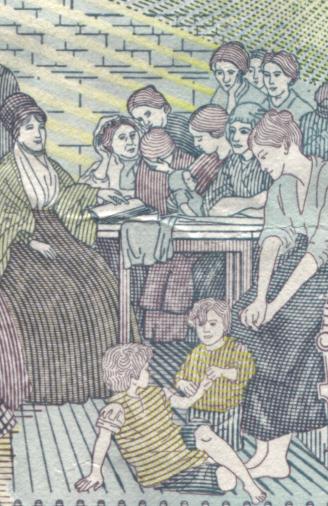
|
Elizabeth Fry (1780-1845)
Elizabeth "Fiver" Fry was Britain's best known Quaker long before 2002 when her picture on the five pound note made her common currency. The Queen's head on the other side is a reminder that Elizabeth Fry's moral life was a struggle between her determination to be a "Plain Quaker" and her pleasure in the high society recognition that made her a Royal favourite. From 1818, Quakers counselled their younger members about the spiritual dangers of benevolent works. Once described in Parliament as "the genius of good", and written about as "Angel of the Prisons", her visits to the women in Newgate Prison made her famous in the early nineteenth century. She lived at St Mildred's Court, near Gracechurch Street, from 1.11.1799, when she moved in above the counting house of her banker husband, Joseph Fry. |
1806 Elizabeth Fry was visited by members of a Quaker committee established to visit friends suspected of being delinquent in the training of their children. (See 1795 minute on family government)
Elizabeth first visited Newgate in January 1813, at the request of the Quaker evangelist, Stephen Grellet, but her visits only began in earnest in January 1817. The following extract from her diary for 24.2.1817 reflects some of her concerns:
"I have lately been much occupied in forming a school in Newgate for the children of the poor prisoners, as well as the young criminals, which has brought much peace and satisfaction with it: but my mind has been deeply affected by attending a poor women who was executed this morning. I visited her twice. This event has brought me into much feeling, attended by some distressingly nervous sensations in the night... This poor creature murdered her baby; and how inexpressibly awful to have her life taken away! The whole affair has been truly afflicting to me; to see what poor mortals may be driven to, through sin and transgression, and how hard the heart becomes, even to the most tender affections."
3.12.1828 Bailiffs occupied the Fry family home as Joseph Fry's bank
had closed its doors unable to pay a rush of customers wanting to withdraw
money. He was made bankrupt and the Religious Society of Friends (Quakers)
formally disowned him in the spring of 1829. Elizabeth
remained an
active Quaker and in 1836/1837 Joseph Fry was reinstated in
membership.
As a prison reformer, Elizabeth Fry
aroused hostility as well as admiration. Some other prison
reformers
disapproved of her unorthodox methods, and the irregular
authority of her lady prison visitors.
It has been said that to see her reading to the prisoners of Newgate
was considered "one of the sights of London".
By the time of her death (12.10.1845), Elizabeth Fry was a kind of
Quaker saint.
Far too good,
the Bishop of Norwich told her memorial meeting, to have a
tomb amongst the
"emblems of heathen mythology" that disgraced Westminster
Abbey.
Lord
Ashley
chaired the meeting on Wednesday 18.6.1846 that resolved to
spend
the four thousand pounds raised in her memory on a more
fitting memorial:
195 Mare Street, Hackney, is a
house set back from the road which is now the Lansdowne Club,
but a Hackney
Council plaque at its gate tells everyone that from 1849 to
1913 it was the
Elizabeth Fry Refuge "to help women in need".
Quaker advice against trading beyond ones means
Quaker prisons established in America
"It was stated by mistake in some of the newspapers, that on
the 31st of January, when His Majesty the King of Prussia visited Newgate,
Mrs Fry read to the prisoners from some religious work, what she selected
that day being the 12th chapter of Romans, and one of the Psalms. It is an
inevitable practice, not only of Mrs Fry, but of all the ladies in
connection with the several prison committees, when reading to the
prisoners, to confine themselves entirely to the truths contained in the
Holy Scripture." The Times 10.2.1842)
"a suitable asylum to be called The Elizabeth Fry
Refuge, for the
temporary reception of repentant females on their release from
the
metropolitan gaols" (The Times, Thursday 18.6.1846 Mrs
Fry's
Testimonial
|
Quaker women who were active in their own church affairs
sought to be active in the affairs of inter-denominational associations
they joined (such as
slavery abolition groups). In
the United States this resulted in some Quaker women being
founders of the Women's Rights Movement. Harriet Taylor, in 1851, wrote
"some of the most eminent names of the present age, have made emphatic protests in favour of the equality of women. And there have been voluntary societies, religious or secular, of which the Society of Friends is the most known, by whom that principle was recognized". |
From the autobiographical sketch of Lucretia Mott (1793-1880), a Quaker woman from Phildelphia, USA:
In 1840, a World's Anti-slavery Convention was called in London. Women from Boston, New York, and Philadelphia, were delegates to that convention. I was one of the number; but, on our arrival in England, our credentials were not accepted because we were women. We were, however, treated with great courtesy and attention, as strangers, and as women, were admitted to chosen seats as spectators and listeners, while our right of membership was denied--we were voted out. This brought the Woman question more into view, and an increase of interest in the subject has been the result. In this work, too, I have engaged heart and hand, as my labors, travels, and public discourses evince. The misrepresentation, ridicule, and abuse heaped upon this, as well as other reforms, do not, in the least, deter me from my duty. To those, whose name is cast out as evil for the truth's sake, it is a small thing to be judged of man's judgement
|
|
Temperance
|
14.8.1841 Josiah Hunt, a Quaker farmer in Somerset, wrote to The Farmers Magazine about "An Important Experiment - Harvest Work Without Strong Drink". In his experiment cocoa or tea sweetened with sugar or treacle and skimmed milk were drunk instead of alcoholic drinks. This was much cheaper and the money saved was spent on nutritious food.
about 1860? Josiah Hunt opened cocoa-houses at either end of Almonbury Tunnel.
1874 British Workman Coffee House opened by Quakers in Bristol.
7.7.1877 The Spectator on "Coffee-Taverns"
|
|
Adult Schools
|
"The first 'adult school' is said to have begun in Nottingham in 1798 to meet the needs of younger women in lace and hosiery factories. It was independent of any other organization and run by William Singleton (a Methodist) and Samuel Fox (a Quaker)" (Mark K. Smith, 2004 "Adult schools and the making of adult education" The encyclopedia of informal education
Quakers formed the "Friends' First-day School Association" in Birmingham in 1847. At first this was mainly concerned with the education of children, but William White (1820-1900) promoted the concern for adult education.
Quakers in York set up an Adult School in 1857. Thirty adults (men over fifteen) had been taught on Sunday morning in a room at the British School in Hope Street. They now moved into a rented room behind the premises of the Quaker business of the Rowntree family. There were two classes: A taken by John Stephenson Rowntree (1834-1937 ) and B by his brother Joseph Rowntree (1836-1935). Arnold Stephenson Rowntree (1872- 1951), the son of John Stephenson Rowntree, became Honorary Secretary of the National Council of Adult Schools (formed in 1899). John Wilhelm Rowntree (1868-1905) was the eldest son of Joseph Rowntree (1836-1925). He published A History of the Adult School Movement (with Henry Bryan Binns) in 1903.
After 1870 the Friends' Adult School in Mason Street, Hull became important, with one of the largest attendances of any in Yorkshire.
May 1872 A national Friends' First-day School Association conference was held at the same time as yearly meeting and in future years the Friends' First-day School Association continued to meet independently of but at the same time as yearly meeting.
The Adult School at Bunhill started in 1879
1882 Home Mission Committee created by Yearly Meeting. A preceding Committee on General Meetings was closed in 1883. Joseph Bevan Braithwaite senior was a member of both.
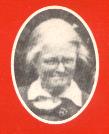
|
Comrade Mary Hughes
|
In Vallance Road, Tower Hamlets there are flats named Hughes Mansions in honour of Thomas Hughes.
Opposite the flats is a Blue plaque put up in 1961 honouring his daughter's name.
In her youth, Mary Hughes (1860-1941) took part in work on behalf of the poor and unfortunate. You drove to that work in a carriage and when the work was done you drove back to a beautiful house.
Mary became deeply convinced that her class was unjustly privileged and felt convicted of its sins against society. She decided that she did not want to visit the poor. She wanted to be with the poor and be poor herself. Choosing to live in the East End, she became a "shabby and sometimes verminous women" living the ideals of Christian Socialism in a direct way.
In 1895 she went to live with her sister and brother-in-law, curate of St Jude's in Whitechapel, and in 1915 moved to Kingsley Hall in Bow, set up by Quakers (Stephen and Rosa Hobhouse, and Muriel and Doris Lester), and named after Charles Kingsley. (Visit Kingsley Hall web site)
Mary Hughes became a Quaker in 1918, influenced by the Society's conscientious objection to the war, but continued to attend Anglican services. She was an early example of what some have called the "Quanglicans", who value the traditions of both churches.
|
Dew Drop Inn
for education and joy |
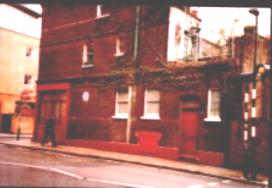
|
Mary's Dew Drop Inn was set up in 1926 in an old pub (previously Earl Grey's Castle) at 71 Vallance Road. (map link) This was converted by the Quaker architect, Malcolme Sparks. In 1928 it was again adapted by the Anglican architect, S. Grylls Wilson, who continued to care for it during Mary's life. |
|---|
After the defeat of the General Strike (1926) and Ramsey MacDonald's cuts in unemployment benefit (1931), Mary's attachment to the Labour Party weakened and her sympathies with the communists grew, although she strongly opposed their appeals to violence. The plate glass windows of the Dew Drop Inn "were pasted up with every sort of propaganda, communist, pacifist, and religious".
Mary was tireless, exasperatingly eccentric and greatly loved: George Lansbury said, "Our frail humanity only produces a Mary Hughes once in a century". She was pictured (with stick) on Gandhi's visit to London in 1931, at Muriel Lester's house, and the Quaker Tapestry have made a panel commemorating her work.
The main building of Bearsted Memorial Hospital (Jewish Maternity Hospital at 22-26 Underwood Road, Whitechapel E1 (just off Vallance Road) was opened in 1927. When it moved to Stoke Newington, Stepney Council bought the premises (shortly after the second world war) to set up an ante- natal clinic, day nursery, nursery for the care of premature infants, hostel for nursery nurses and school treatment centre. The new project was named the Mary Hughes Centre and Day Nursery. The project was continued by Tower Hamlets Council, and ran for almost 50 years. It closed about 1996. It is now called the Mary Hughes Building and houses a variety of children and adult services for local people.
Black Tuesday 27.3.1945 Last V2 rocket attack on London. The rocket hit Hughes Mansion in Vallance Road, Bethnal Green. 133 people died. All but 20 of them were Jewish. It was the second largest death toll of the V2 campaign. A remembrance service was held on Sunday 26.3.1995 in the Brady Centre, Hanbury Street, just off Brick Lane. After Psalms were read, Montague Richardson, former chair of the Brady Boy's club, intoned the memorial prayer, the Kaddish. (Hackney Gazette 23.3.1995) weblink to the names of the Jewish dead
We know of a book and a booklet about Mary Hughes:
Rosa Hobhouse, 1949 Mary Hughes: her life for the dispossessed
London, Rockliff. (Forward by Howard Spring)
Hugh Pyper, 1985, Mary Hughes a booklet published by the
Children and Young People's Committee of Quaker Home Service.
| This web page is built around the exhibition Quakers in Shoreditch held in Shoreditch Library, Hoxton in 1998. The original text was written by Peter Daniels and other material comes from Quakers in the City by Lisa Bowers Isaacson. Responsibility for the page rests entirely with Andrew Roberts. |
|
Jesus says he will not call us servants, but friends, for whatever he hears
of his father he will share with us.
(John 15:15) So we should do one with
another. We are called to be friends in the truth.
He also said that we should love one another. (John 13:34+35)
"Now Negroes and Indians make up a very great part of the families in this
island, for whom an account will be required by Him who comes to judge both
quick and dead, at the great day of judgment when every one shall be
rewarded according to the deeds done in the body, whether they be good or
whether be evil, - at that day, I say, of the resurrection both the good
and of the bad, of the just and the unjust..." George Fox and
others in the name of the living Christ. Barbados 1671
|
Braithwaite
evangelical leadership
Bunhill Tree Preservation 1975 - 2008
graveyards in 1837
John Woolman Settlement
Frederick
Pond (two)
Royal connections: Penn,
Quire,
Bevan,
Allen,
Fry,
Solomon Eagle or
Whitecross Street Scheme plan 7
Priscilla
Wakefield and
family
Try
Friends House web site for more information. The Library part
has is some advice about tracing Quakers in the family which includes a
library guide to genealogical resources. This is also interesting about the
history and organisation of the society.
Particularly useful may be
The Quaker Family History Society, which was formed in 1993 and
is a member of the Federation of Family History Societies. Its aim is to
encourage and assist anyone interested in tracing the history of Quaker
families in Britain and Ireland.
graveyards in
1896
graveyards in 2009
Solomon Eccles
I always like hearing from
people about anything that interests them on my web page - or
about their Quaker connections or other historical research.
![]()
what made
some Quakers rich? -
(archive)
"when I
grow rich"
may not be a very appropriate tag for Quakers in
business -
Quakers in business such as the
Bevans were well-off to start with.
Quaker
asylum
According to Harriet
Martineau,
"Quaker lunacy, being seldom
caused by ... the violence of the passions, usually proceeds from some
deeper and more unmanageable cause"
Quaker Street blog
There are links from this to blogs run by other Quakers - Including
Under the Green Hill and
Lauraxpeace
Friendlink: A message board for young Quakers
